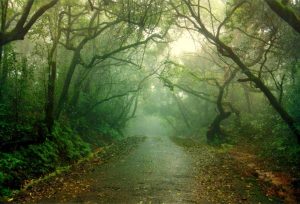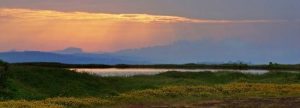Scenic Panchagani
 Panchgani is a perfect getaway to recharge your spirit, relax, and feel revived. The air is clean, you can hear the birds chirping, and you can see variety of green shades in the endless grasslands. Visit Panchgani to reconnect with your loved ones over delicious, healthy snacks and meal. Get relief from stress and boredom.
Panchgani is a perfect getaway to recharge your spirit, relax, and feel revived. The air is clean, you can hear the birds chirping, and you can see variety of green shades in the endless grasslands. Visit Panchgani to reconnect with your loved ones over delicious, healthy snacks and meal. Get relief from stress and boredom.
Beautiful Panchgani was discovered by the British superintendent John Chesson and he was assisted by one Mr. Rustomji Dubhash. The English men were looking out for a summer resort, and they found Panchgani most suitable for the purpose. Pnchgani got its status as a hill station in 1860. John Chesson is credited for doing good work in the hill station; he planted many plant species from the western world in Panchgani; some of the plants like silver oak and poinsettia, which have flourished since then. Mahabaleshwar was the summer resort of choice for the British, but it was uninhabitable during the monsoons. Panchgani was developed as a retirement place for the British because it remained pleasant throughout the year. Panchgani is set in the vicinity of five villages: Dhandeghar, Godavli, Amral, Khingar, and Taighat. Hence the name Panchgani was decided for the hill station. Chesson encouraged various professionals such as tailors, dhobis, butchers, vegetable vendors, building contractors, electricians, carpenters, and hoteliers etc. to settle in Panchgani. He did this to develop the infrastructure of the hill station.
The Krishna River flows below nearby creating the lake of Dhom. The temperature in Panchgani is around 12 degrees during the winter, and sometimes reaches 34 degrees during the summer; however the humidity level is very low. The Monsoon rains hit here hardest and the rainy season spans between June and February, allowing the region three months of relatively dry and sunny spring. The five hills surrounding Panchgani are topped by a volcanic plateau, which is the second highest in Asia after the Tibetan plateau. The tableland is the highest part of the hill station elevated above 4550 feet above sea level covering almost 95 acres. In the months August and September the tableland is covered with lush green emerald carpet of grass. The tableland is raised by pressure between the earth plates. The area has high seismic activity, due to an epicenter near Koynanagar where the Koynanagar Dam and a hydroelectric power plant have been built. Even Koynanagar dam is worth a visit.
 Panchgani is a thriving hub of food processing units today. Panchgani is surrounded by vast tracts of arable, agricultural land and is known for its agriculture and agro-business. Panchagani’s proximity to urbanized markets such as Mumbai, Nasik, Nagpur, Aurangabad etc, changing food habits and dependence on ready to eat food, cosmopolitan nature of the city, connectivity to JNPT port has made the processed food cluster of Panchagani very famous. It exports jams, jellies, toffees, pickles, chtanis to many foreign countries. Panchagani cluster is developing very fast and is home to about 3000 plus small and micro entrepreneurs. The cluster produces a range of products comprising semi-processed ready mix products, pickles, jams, jellies, squashes & syrups, Ready to Eat/Ready to Cook products ground & processed spices and papad.
Panchgani is a thriving hub of food processing units today. Panchgani is surrounded by vast tracts of arable, agricultural land and is known for its agriculture and agro-business. Panchagani’s proximity to urbanized markets such as Mumbai, Nasik, Nagpur, Aurangabad etc, changing food habits and dependence on ready to eat food, cosmopolitan nature of the city, connectivity to JNPT port has made the processed food cluster of Panchagani very famous. It exports jams, jellies, toffees, pickles, chtanis to many foreign countries. Panchagani cluster is developing very fast and is home to about 3000 plus small and micro entrepreneurs. The cluster produces a range of products comprising semi-processed ready mix products, pickles, jams, jellies, squashes & syrups, Ready to Eat/Ready to Cook products ground & processed spices and papad.
Even today you see a colonial style town in Panchgani. It has many Parsi styles of houses. Go for hiking to the Rajpuri caves or visit Pratapgad fort. It has many handicraft and Kolhapur chappal stalls. With spectacular valleys, winding river, tall trees, scattered hamlets, greenery and wild flowers Panchgani is indeed the best hill station for a leisure holiday.
















































